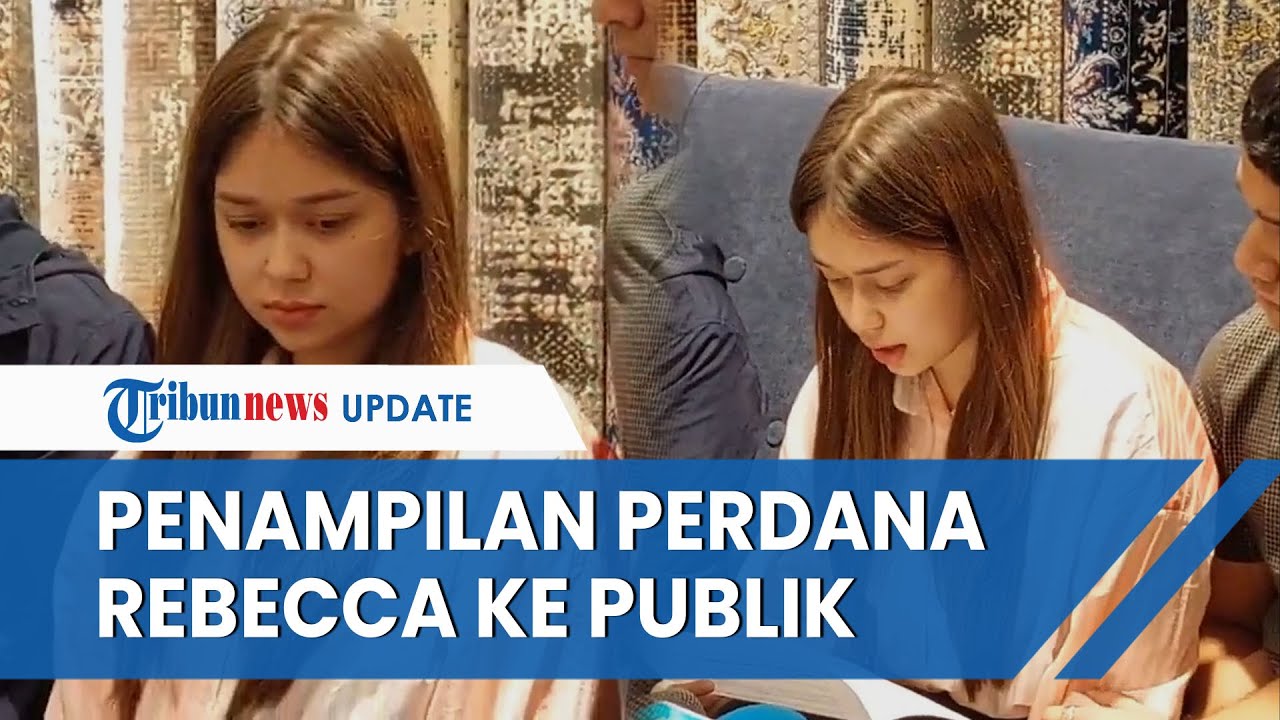Video Rebecca Klopper Twitter Indonesian Actress at Center of Explicit Video Controversy
In today’s fast-evolving digital landscape, social media platforms have transformed the way we communicate, share ideas, and influence public discourse. Viral content—especially videos—has become a defining element of our online culture, serving as catalysts for conversation, connection, and even social change. One such instance that has captivated audiences across platforms is the “Video Rebecca Koppler Twitter.” This phenomenon encapsulates the blend of personal storytelling, raw authenticity, and a carefully honed digital presence that resonates with millions worldwide.
The emergence of viral videos often marks a turning point in the influencer culture. As more individuals embrace the democratization of media, authenticity has become a currency that both draws in and retains an engaged audience. Rebecca Koppler, the face behind this viral clip, embodies this shift. Her presence on Twitter and other social platforms exemplifies how personal narratives can not only spark debate but also offer solace, inspiration, and a shared sense of community in times of rapid social change.
This article examines the viral impact of Rebecca Koppler’s video, delving into the context of its creation, the dynamics of its spread across social media, and the subsequent influence on digital storytelling. We will explore who Rebecca Koppler is, analyze the content and context of the video, dissect public reactions, and discuss the broader implications on social media trends. Furthermore, the discussion will extend to the valuable lessons that content creators and influencers can draw from this case, offering insights into the future of authentic storytelling in a digital era.
By understanding the anatomy of this viral phenomenon, we gain insight into a larger narrative that defines contemporary social media: the interplay between personal vulnerability and public engagement. As digital platforms continue to evolve, stories like Rebecca Koppler’s serve as reminders that behind every trending topic lies a complex tapestry of human experiences, emotions, and cultural shifts. This article aims to unpack these layers and present a detailed exploration of the factors that contribute to the success of viral content in today’s interconnected world.
Who is Rebecca Koppler and Her Digital Persona
Rebecca Koppler is much more than a fleeting name trending on Twitter—she has emerged as a modern influencer whose digital persona is built on authenticity, relatability, and a fearless approach to discussing personal and societal issues. In an age where social media has blurred the boundaries between public and private life, Rebecca’s candid storytelling and open discussion of life experiences have earned her both admiration and scrutiny.
Born out of a need for genuine connection in a world saturated with polished images and staged narratives, Rebecca’s online identity is characterized by her willingness to share moments of vulnerability alongside her triumphs. Through her Twitter feed and other social media channels, she has crafted a space where discussions about mental health, personal growth, and societal challenges are not only welcomed but celebrated. This approach has allowed her to create a loyal following—individuals who see in her not just an influencer, but a mirror reflecting their own struggles and aspirations.
Rebecca’s rise to prominence is a testament to the power of personal narrative. While many influencers rely on carefully curated content that adheres to the standards of perfection, her digital persona is refreshingly raw and honest. This authenticity is what sets her apart in an increasingly competitive online environment. Rather than presenting an unattainable image of perfection, she openly discusses her flaws, her learning experiences, and the moments that have shaped her worldview.
Moreover, her ability to articulate thoughts on topics ranging from social justice to personal empowerment has resonated with a diverse audience. In an era where many seek genuine connections, Rebecca’s blend of vulnerability and strength provides a counter-narrative to the often superficial content circulating on digital platforms. Her video on Twitter, which has since become a viral sensation, is a perfect example of how personal storytelling can strike a universal chord. It is not merely the content of the video that garners attention but the emotional honesty and the call for real dialogue that accompanies it.
Rebecca’s digital journey also reflects broader trends in influencer culture, where authenticity and relatability are increasingly prized over traditional measures of celebrity. As social media algorithms continue to favor genuine engagement over mere follower counts, influencers like her are redefining success. They show that the true impact of online content is measured not in likes or shares alone but in the meaningful conversations and community connections it fosters. In this light, Rebecca Koppler is not just an influencer; she is a pioneer in a new wave of digital storytelling that prioritizes real human experiences over superficial narratives.
Analysis of the Video: Context, Content, and Impact
The “Video Rebecca Koppler Twitter” is a case study in the power of genuine storytelling in a digital age. At its core, the video is a candid moment where Rebecca shares insights that range from personal reflections to commentary on broader social issues. The context in which the video was produced is critical to understanding its impact. In a digital world rife with misinformation and overly produced content, the authenticity that Rebecca exudes in this video stands out as a refreshing deviation from the norm.
From the very beginning, the video captures a sense of immediacy and intimacy. Rather than relying on elaborate production techniques or heavily edited visuals, the video focuses on the essence of the message. Rebecca speaks directly to the camera as if engaging in a one-on-one conversation with each viewer, creating an atmosphere that is both personal and relatable. This direct approach is particularly effective on platforms like Twitter, where authenticity and spontaneity often yield the highest engagement.
Content-wise, the video touches on several themes that are central to contemporary digital discourse. Rebecca discusses topics that are both personal and universally relatable—ranging from mental health struggles to the challenges of navigating modern social dynamics. Her choice to address these issues openly, without the usual filters or reservations, is what propels the video into the realm of viral content. In a society where mental health is increasingly recognized as an essential component of overall wellbeing, her willingness to share her personal experiences not only validates the struggles of many but also opens up space for broader conversations on the topic.
The impact of the video is multifaceted. Firstly, it serves as a rallying cry for those who feel marginalized by mainstream media’s tendency to present only polished, idealized images of success and happiness. By contrast, Rebecca’s unfiltered approach resonates deeply with viewers who are looking for something more genuine—a narrative that acknowledges the imperfections of life and the value of overcoming adversity.
Furthermore, the video exemplifies how social media algorithms can elevate content that triggers authentic emotional responses. Within hours of its release, the video began trending on Twitter, not solely because of its content but also due to the community of supporters who amplified its message. This rapid spread highlights the role of digital communities in curating content that feels real and relevant. Viewers, inspired by Rebecca’s vulnerability, shared the video widely, sparking discussions that extended beyond the confines of her original message.
Another aspect worth noting is the interplay between content and context. The video was released at a time when audiences were particularly attuned to conversations about mental health, authenticity, and social responsibility. In this environment, the video did not exist in isolation but as part of a larger dialogue on the importance of sharing one’s truth. The intersection of personal narrative and social commentary in Rebecca’s video has made it a significant reference point for discussions on how digital content can effect change, both at an individual level and within society at large.
In essence, the video is not just a fleeting moment of online virality; it is a mirror reflecting the evolving expectations of digital audiences. Its success lies in its ability to blend personal authenticity with broader social relevance—a formula that many content creators aspire to replicate in today’s competitive media landscape.
Public Reactions and Social Media Engagement
The public’s response to the “Video Rebecca Koppler Twitter” has been as diverse as it has been passionate. Social media platforms, particularly Twitter, became the primary stage for an outpouring of emotions, opinions, and shared experiences. The immediate reaction to the video was one of overwhelming support from viewers who identified with Rebecca’s honesty and bravery. Many users expressed gratitude for her willingness to discuss topics that are often shrouded in stigma, praising her for providing a voice to those who might otherwise feel isolated.
Positive engagement was not limited to simple likes or retweets; it manifested in long-form comments, threads discussing personal experiences, and the creation of dedicated hashtags that further amplified her message. For many, the video was a beacon of hope—a sign that even in an age dominated by curated content and commercialized influencers, authenticity could still triumph. The flood of encouraging comments created a ripple effect, inviting more users to share their own stories and engage in thoughtful dialogue. This sense of community building is one of the most significant aspects of the video’s impact.
However, as is often the case with viral content, not every reaction was uniformly positive. A section of the audience expressed skepticism regarding the motivations behind the video. Critics questioned whether the candidness was genuine or a calculated move to gain attention and increase follower counts. This dichotomy between praise and critique is a common phenomenon in the digital realm, where the same piece of content can evoke diametrically opposed responses. Despite these criticisms, the overall trend leaned towards a positive reception, with many viewers valuing the personal insights and real-life struggles that Rebecca shared.
The debates sparked by the video were emblematic of a broader cultural conversation taking place across social media. For instance, while some users focused on the video’s inspirational aspects, others delved into discussions about the broader implications of influencer culture. These conversations often extended into discussions about the responsibilities of public figures in addressing sensitive issues like mental health and personal trauma. In many ways, the video served as a catalyst for a more nuanced understanding of what it means to be an influencer in the modern age.
Moreover, the rapid spread of the video underscored the power of social media algorithms in promoting content that resonates emotionally with viewers. Platforms like Twitter are designed to reward engagement, and the sheer volume of interactions with Rebecca’s video only further propelled it into trending status. This, in turn, created a feedback loop where the video not only reached a wider audience but also influenced the type of content that was subsequently shared on the platform. In this context, the video became a reference point for discussions on the importance of authenticity in digital storytelling.
The comments section and social media threads that emerged in response to the video provide valuable insights into contemporary online discourse. They reveal a community that is not only willing to celebrate personal triumphs but is also prepared to engage in critical analysis of the media they consume. This dynamic interplay between celebration and critique is indicative of a maturing digital culture—one that values genuine connections and substantive dialogue over superficial endorsements.
In summary, the public reaction to the “Video Rebecca Koppler Twitter” is a testament to the power of authentic storytelling in today’s media environment. It highlights the capacity of a single video to unify a community, spark important conversations, and challenge the conventional norms of influencer culture.
Broader Implications on Social Media Trends and Influencer Culture
The viral success of Rebecca Koppler’s video has significant ramifications for social media trends and the evolution of influencer culture. In a media ecosystem saturated with meticulously curated images and pre-packaged narratives, her candid approach signals a paradigm shift toward valuing raw, unfiltered experiences. This section explores the broader implications of this trend and how it shapes the digital landscape.
One major implication is the increasing importance of authenticity. Over the past few years, audiences have grown weary of overly polished content that feels distant from real life. The viral spread of Rebecca’s video demonstrates that viewers are actively seeking content that reflects the complexities of genuine human emotion and experience. This shift in preference is influencing how influencers approach content creation. Many are now incorporating more personal, behind-the-scenes glimpses into their lives, recognizing that vulnerability often leads to deeper audience engagement.
Furthermore, the success of the video underscores the democratizing power of social media. Traditional media channels once held the reins of storytelling and public discourse; today, platforms like Twitter, Instagram, and TikTok allow everyday individuals to become influential voices in their own right. Rebecca’s rise as a digital influencer is a clear example of this transformation. With just a smartphone and a willingness to share her truth, she has managed to captivate a global audience and influence discussions on important social issues.
This democratization also leads to a more interactive form of storytelling. Modern audiences do not passively consume content; they actively engage, critique, and contribute their own narratives. The dialogue that emerged around Rebecca’s video is a prime example of this participatory culture. Viewers not only resonated with her message but also added layers of interpretation, sharing personal anecdotes and sparking broader conversations on topics like mental health and societal pressures. This interactive environment challenges traditional models of media consumption and highlights the evolving role of influencers as facilitators of community discourse rather than mere broadcasters of information.
Additionally, the viral phenomenon has implications for the business of digital influence. Brands and marketers are increasingly recognizing that authenticity is a valuable asset. The days when influencer marketing was solely about image and aspirational lifestyles are gradually giving way to campaigns that prioritize genuine storytelling. As audiences grow more discerning, partnerships that feel contrived or inauthentic are losing their appeal. In this context, the organic popularity of Rebecca’s video reinforces the idea that authenticity can drive both engagement and commercial success.
Moreover, the case of Rebecca Koppler reflects a broader cultural shift where personal narratives are seen as a form of empowerment. In a digital age where many struggle with feelings of isolation or inadequacy, stories that highlight personal challenges and resilience can offer hope and solidarity. Such narratives encourage viewers to embrace their own imperfections and to seek support from a community that values real-life experiences over idealized representations.
Finally, the viral spread of this video has implications for the future of content curation and distribution on social media platforms. Algorithms that favor engagement are increasingly prioritizing content that elicits strong emotional responses—whether positive or negative. This creates an environment where authentic, relatable content is not only appreciated by viewers but also rewarded by the system, further reinforcing the trend towards genuine storytelling. In this way, Rebecca Koppler’s video stands as a case study for how personal authenticity can redefine influencer culture and shape the broader trends in digital media.
Lessons for Content Creators and the Future of Authentic Storytelling
The story behind the “Video Rebecca Koppler Twitter” offers numerous lessons for content creators and influencers striving to build a lasting connection with their audiences. In an era defined by rapid consumption of information and ever-shifting digital trends, authenticity emerges as the cornerstone of impactful content. Here are some key takeaways that aspiring storytellers can derive from this phenomenon.
1. Embrace Authenticity:
Audiences today are highly attuned to authenticity. Rather than striving for a picture-perfect image, content creators are finding success by sharing real-life experiences and genuine emotions. Rebecca’s unfiltered approach serves as a powerful reminder that vulnerability and honesty often resonate more deeply than a meticulously curated persona. Authenticity not only builds trust but also fosters a sense of community among viewers who see parts of themselves in the narrative.
2. Engage in Meaningful Dialogue:
The video sparked extensive discussions and debates on social media, illustrating the importance of creating content that invites conversation. Rather than being a one-way broadcast, impactful storytelling should encourage viewers to share their own experiences, ask questions, and engage critically with the content. This two-way interaction is essential for building a loyal following and establishing a digital community centered around shared values and experiences.
3. Leverage the Power of Timeliness:
One of the keys to the video’s success was its relevance to contemporary issues such as mental health and societal pressure. Content creators should remain attuned to the pulse of current events and cultural shifts, ensuring that their narratives are both timely and relevant. By aligning personal stories with broader social conversations, creators can enhance the impact of their message and foster deeper connections with their audience.
4. Prepare for Diverse Reactions:
Going viral means that your content will be subject to both praise and criticism. It is important for content creators to anticipate a range of reactions and be ready to engage with feedback constructively. Whether through thoughtful responses or simply acknowledging differing opinions, maintaining an open dialogue with your audience helps build resilience and trust in your personal brand.
5. Focus on Community Building:
At its core, successful digital storytelling is about creating and nurturing a community. Rebecca’s video did not exist in isolation; it sparked a wave of conversations that brought people together around shared experiences and values. Content creators should aim to cultivate an inclusive environment where followers feel valued and heard. This can be achieved through regular engagement, interactive content, and initiatives that encourage user participation.
6. Understand the Mechanics of Virality:
While authenticity is essential, it is also important to understand the role of social media algorithms in content dissemination. Videos and posts that evoke strong emotional responses tend to receive higher engagement, which in turn propels them into trending territories. By analyzing successful case studies like Rebecca’s video, content creators can learn how to balance genuine storytelling with strategies that increase visibility and reach.
7. Innovate and Experiment:
The digital space is continually evolving, and staying relevant requires a willingness to innovate. Content creators should experiment with new formats, platforms, and styles of storytelling. Whether it’s through live streams, interactive posts, or behind-the-scenes content, finding fresh ways to communicate your message is key to maintaining long-term engagement and adapting to the changing media landscape.
As the digital realm continues to mature, the future of authentic storytelling lies in the convergence of personal truth and technological innovation. Creators who can effectively blend these elements will not only capture the attention of today’s audiences but will also set the standard for meaningful and enduring digital content.
The “Video Rebecca Koppler Twitter” phenomenon is more than just a momentary flash in the vast landscape of digital media; it is a powerful testament to the evolving nature of storytelling in the 21st century. Through its blend of authenticity, vulnerability, and social relevance, the video has established itself as a landmark case study for understanding how personal narratives can influence broader societal conversations.
At its heart, the video highlights the enduring human need for connection and understanding. In a world where digital interactions often feel impersonal and transient, Rebecca Koppler’s unvarnished approach serves as a reminder that behind every viral trend lies a real person with genuine experiences. Her story, and the discussions it has ignited, underscore the transformative potential of digital media when it is used to share honest reflections and to challenge conventional norms.
Looking ahead, the legacy of this viral moment is likely to influence not only the trajectory of influencer culture but also the broader realm of digital communication. As audiences increasingly demand authenticity over superficial perfection, influencers and content creators will be compelled to revisit their storytelling approaches. This shift may well herald a new era of digital media—one where personal truth is celebrated, and where the power of community and genuine dialogue reigns supreme.
Moreover, the success of the video underscores the symbiotic relationship between content and context. In today’s digital ecosystem, it is not enough to simply produce content; creators must also tap into the zeitgeist, aligning their narratives with the pressing social issues and emotional currents of the moment. By doing so, they can create content that is not only engaging but also transformative—content that not only entertains but also empowers viewers to reflect, engage, and act.
For aspiring influencers and established content creators alike, the lessons drawn from Rebecca Koppler’s viral video are clear. Authenticity, engagement, and a commitment to sharing one’s true self are more valuable than ever in an environment where algorithms and commercial interests often overshadow human connection. As digital platforms continue to evolve, those who prioritize real stories and genuine interactions will be best positioned to leave a lasting impact on their audiences.
In conclusion, the viral journey of the “Video Rebecca Koppler Twitter” is a compelling illustration of the power of authentic digital narratives. It challenges us to look beyond the superficial and to appreciate the deep, human stories that underpin every viral moment. As we move forward, this phenomenon will undoubtedly serve as both a benchmark and an inspiration for the future of digital storytelling—a future in which every voice has the potential to spark change, foster connection, and transform the way we engage with the world around us.
EN -
Bu Guru Salsa Viral New Video Link An In-Depth Analysis
Video Bokeh Background Jpg Sma Full 2023
Luigi Mangione Video Leak Unveiling the Controversy
Camilla Araujo Leaked Unpacking The Viral Controversy And Its Impact
Gia Duddy Leak Unraveling The Controversy And Its Implications
Corinna Kopf Leaked The Internet Scoop That Drove Everyone Crazy
Bobbi Althoff Leaks An Overview Of The Scandal And Its Impact




 | Sitemap | Mail
| Sitemap | Mail